
Sawtoy.Saytay has been studying Amis traditional musical instrument for over three decades, and there is no end to this path of cultural learning and inheritance. He says, “as long as I live and breath, this path will go on and on.”
The first thing Sawtoy does when he reaches his workshop is start a fire. With the firewood crackling, he picks up the wood, bamboo, and tools lying in a heap and begins to chisel or polish away with ease while humming a song. Amis traditional musical instruments such as bamboo flute, nose flute, and mouth harp take form in his clever hands just like magic. A spontaneous play on the instruments produces pure and simple music.
Traditional music carries the history, culture, and memory of the indigenous group. Amis people often communicate via singing in weddings, funerals, and everyday life. Musical instrument accompaniment helps to convey affections such as solace, encouragement, and blessings. “Music is part of the Amis life,” says Sawtoy.
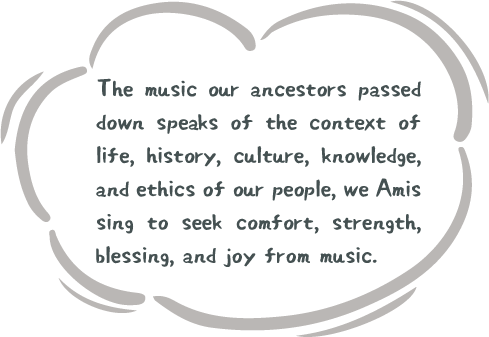
Traditionally, Amis people didn’t really intend on making musical instruments. In the past, in order to chase away birds or to communicate, Amis people used natural materials close at hand including bamboo, wood, hemp rope, and fruit, and make devices that produce sounds. The sounds produced by such devices are high-pitched with a natural tempo, therefore, in addition to their practical applications, they became tools of accompaniment when people sing. Among which, bamboo is the most frequently used, Sawtoy says, “the lives of Amis people is closely connected to bamboo, everything from food, clothing, housing, transportation, education, and entertainment have to do with bamboo products.”
First came songs, then came the devices that answer the songs, therefore these devices are also called “the sounds that followed the songs.” Traditional musical instruments are easily sourced and produced, but hard to preserve and mostly just discarded after use, “when people stop using these musical instruments, they will gradually disappear from our lives,” Sawtoy says slowly.
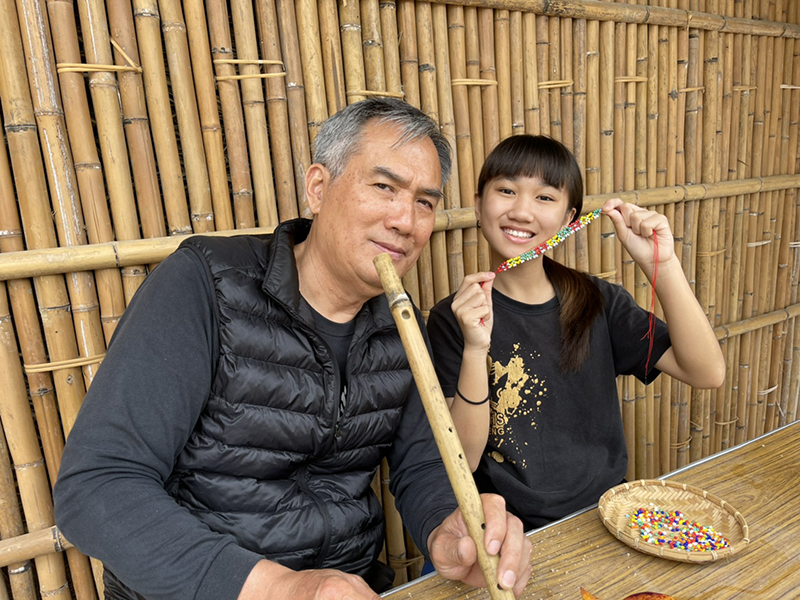
The Singing that Occupied the Mind,
the Lost Sounds Retrieved
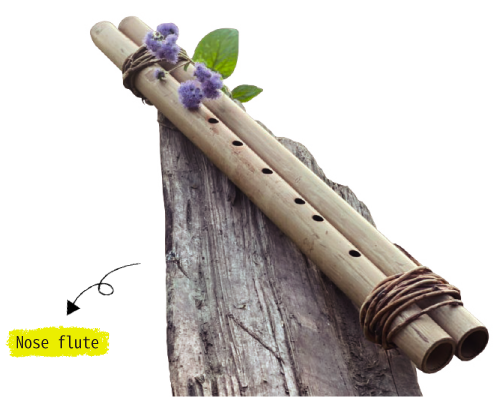
hen Sawtoy was younger, people would gather after work or in between farming chores, and listen to elders tell stories and sing songs. During major events such as weddings, funerals, or rituals, families and kinship would be convened to express their joy or sorrow with singing. Sawtoy shares, “elders’ gathering would last hours, we kids would fall asleep and wake up and fall asleep again, with their continuous singing occupying our minds, these memories are of great impact to me.” Having grown up in a musical environment, studied in a Christian middle school which exposed him to hymns and western music theory, his interest and literacy in music is greatly enriched.
In 1994, Public Television hosted the training of indigenous television talents, and Sawtoy passed the first entrance exam for indigenous TV news reporter. Once, during the production of an Amis Harvest Ritual feature report, Sawtoy read the book Musical Instruments of the Amis People, documenting the musical instruments that belonged to his people. He was both astonished and confused, “where have these musical instruments gone?” In order to find out why, plus the fact that the government was moving too slow in the establishment of the Taiwan Indigenous TV, Sawtoy resigned in 1995, returned home to Taitung and established a local TV station featuring reports on indigenous issues. Meanwhile, he also began field research on Amis traditional musical instruments.
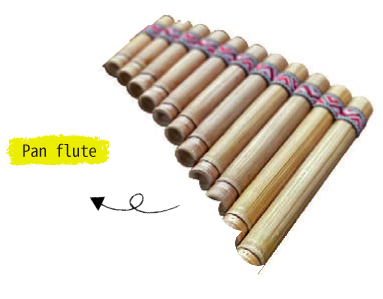 Sawtoy replicated by hand the traditional musical instruments based on the photographs and descriptions in the book, touring the Amis indigenous Community in Hualien and Taitung interviewing elders. Sawtoy says, “there were still elders who could play and produce these musical instruments, but they also said that people barely use them anymore.” As times changed, life in the indigenous community have also evolved, and many musical instruments which were produced in relation to the traditional lifestyle have gradually disappeared as well. Sawtoy spent 7 years on field research, recovering one after another the lost or slowly disappearing traditional musical instruments, “we once exhibited up to 120 hand-replicated Amis traditional musical instruments in the museum, now we have added more and expanded to almost 200 in the collection.”
Sawtoy replicated by hand the traditional musical instruments based on the photographs and descriptions in the book, touring the Amis indigenous Community in Hualien and Taitung interviewing elders. Sawtoy says, “there were still elders who could play and produce these musical instruments, but they also said that people barely use them anymore.” As times changed, life in the indigenous community have also evolved, and many musical instruments which were produced in relation to the traditional lifestyle have gradually disappeared as well. Sawtoy spent 7 years on field research, recovering one after another the lost or slowly disappearing traditional musical instruments, “we once exhibited up to 120 hand-replicated Amis traditional musical instruments in the museum, now we have added more and expanded to almost 200 in the collection.”

Sounds are Meaningful,
Introduce the World to Children with Sounds
To pass on the traditional musical instruments that were painstakingly recovered, Sawtoy established a band in 1999 in the namesake of “kakeng”, a bamboo bell used by Amis people for wedding announcements. He recruits teenage students and teaches them the sound culture of the Amis people combining percussion, songs, and dance.
Over 23 years, Kakeng produced many albums, trained hundreds of students, and performed domestically and internationally. Kakeng Band is now a well-known indigenous band in Taiwan, currently a regular residence at the Amis Folk Center of the East Coast National Scenic Area, as well as teaching and coaching at many elementary schools in Taitung on a weekly basis.
When teaching children musical instruments, Sawtoy does not apply the western music theory generally used. “There is no music score or orchestra layout at Kakeng, we do not care about pitch accuracy, but guide children to feel the music by ‘listening’ and ‘watching’.” Sawtoy shares that student at Kakeng learn to play the musical instruments naturally by hands-on playing and listening to the melody, “the key is whether children are willing to ‘stand behind the musical instrument’ and feel the music, so they can bond with the musical instrument.”
Kakeng follows the traditional way of how Amis people learned music, nurturing the competence to sing and play musical instruments by being exposed to, watching, and listening in daily life. Elders who excel at singing and playing musical instruments in the community are mostly unfamiliar with the western music theory, yet it does not undermine their musical attainment. Sawtoy explains that “the western music scale of Do, Re, Mi means nothing to the elders, but ‘sounds’ are meaningful.”
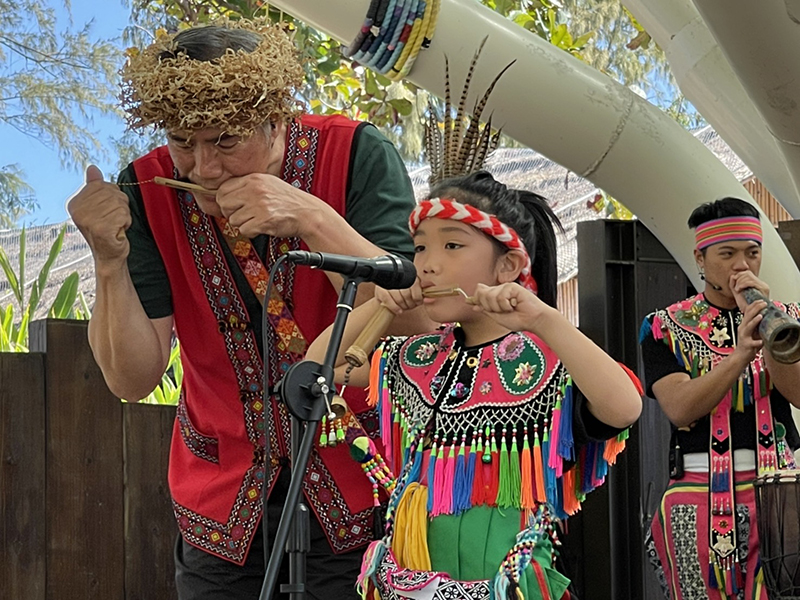
Sawtoy.Saytay teaches children how to make musical instruments from natural material and how to play them.
My Tradition will be Defined
by You in the Future
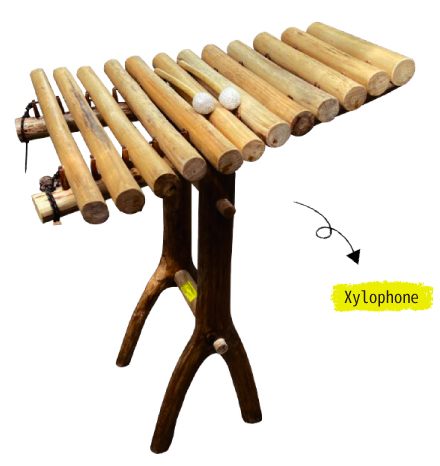
Dedicated to promoting the Amis traditional musical instruments, Sawtoy aims to not only replicate traditions but to lay down a “foundation” for future generations. He believes that music is enriched with accumulation over time, and “only when you evolve with time and combine it with the contemporary life will the culture be continuously inherited.” Therefore, Sawtoy not only applies traditional elements to the new Amis songs he writes, but also works to improve the traditional instruments, for example applying bamboo charcoal to prevent natural bamboo from being eaten by insects thus rendering it not preservable.
Sawtoy recognizes the valuable knowledge and memory passed down by ancestors in the Amis dance and musical culture and feels profoundly the power of life. He states that, “‘tradition’ requires a vehicle, because of the effort of our ancestors, we now have songs and dance, and we must find people who can inherit accordingly and pass them on.”
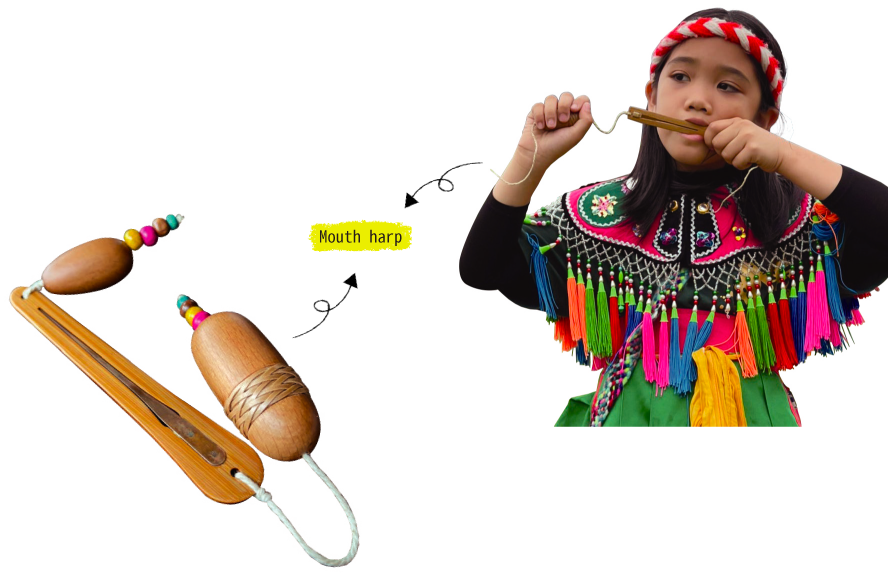 What Sawtoy is doing is being that vehicle of cultural inheritance. He often says to the young people, “I am not the one to define tradition, I’m simply describing the traditions of the earlier generations. The traditions of my generation will be defined by you in the future.”
What Sawtoy is doing is being that vehicle of cultural inheritance. He often says to the young people, “I am not the one to define tradition, I’m simply describing the traditions of the earlier generations. The traditions of my generation will be defined by you in the future.”




